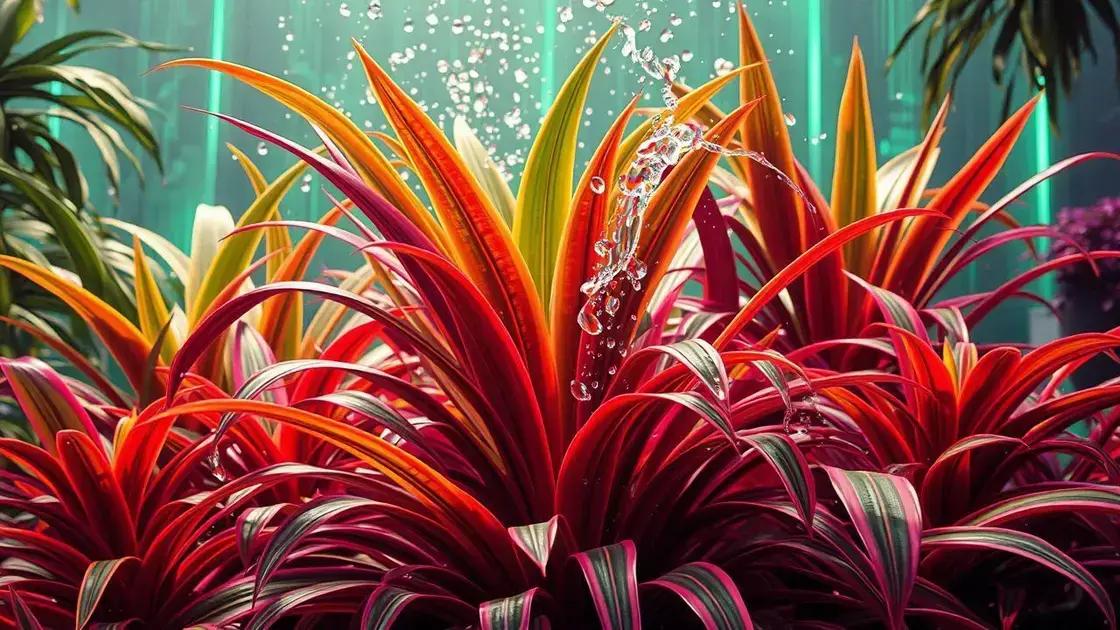How to Care for a Dracaena Corn Plant: 5 Essential Tips
How to care for a dracaena corn plant can seem overwhelming for first-time indoor gardeners. However, mastering the basics can transform your home into a lush oasis. From selecting the right potting mix to understanding their water needs, every detail can significantly impact your plant’s health. Let’s dive into some vital aspects that will ensure your dracaena corn plant flourishes.
Table of Contents
ToggleUnderstanding the light requirements for dracaena corn plants
Understanding the light requirements for dracaena corn plants is essential for maintaining healthy growth. These beautiful houseplants thrive best when provided with the appropriate amount and type of light. Below, we explore the optimal light conditions necessary for your dracaena corn plant.
Optimal light conditions for dracaena corn plants
- Bright indirect light: Dracaena corn plants prefer bright, indirect sunlight. Placing them near a window with filtered light is ideal.
- Low light tolerance: While these plants enjoy bright conditions, they can also adapt to lower light situations. However, their growth may slow down.
- Avoid direct sunlight: Exposure to direct sunlight can scorch the leaves, leading to brown tips and overall damage. Always position your plant where it can receive indirect rays.
Signs of appropriate light levels
Knowing how to read your plant’s signals can help you optimize its location:
- Healthy growth: If your dracaena corn plant is growing steadily, it’s likely receiving the right amount of light.
- Color vibrancy: Leaves should appear bright green. If they are dull, it may indicate insufficient light.
- Leaf drop: If your plant starts losing leaves, consider adjusting its light exposure.
Light requirements by season
Dracaena corn plants may need light adjustments depending on the season:
| Season | Light Needs |
|---|---|
| Spring | Increase exposure to bright indirect light as days become longer. |
| Summer | Maintain bright indirect light; watch for any signs of leaf scorching. |
| Fall | Decrease direct exposure slightly as sunlight intensity dwindles. |
| Winter | Consider moving your dracaena closer to the light source as days shorten. |
For those interested in expanding their plant care knowledge, exploring indoor gardening techniques offers great insights into how other enthusiasts meet their plants’ light needs efficiently.
By understanding the light requirements for your dracaena corn plant, you can provide an environment that encourages strong growth and beautiful foliage.
Essential watering techniques for dracaena care

Essential watering techniques for dracaena care are crucial for maintaining a healthy dracaena corn plant. Proper watering helps ensure optimal growth and prevents common problems, such as root rot. Here we will explore the best practices for watering your plant effectively.
Understanding your dracaena’s water needs
- Check soil moisture: Always check the top inch of soil before watering. If it feels dry, it’s time to water.
- Seasonal adjustments: Dracaena plants need more water during the growing season (spring and summer) and less during dormancy (fall and winter).
- Water quality: Use room temperature, filtered water for optimal results. Chlorinated or hard water can harm your plant.
Effective watering techniques
To ensure that your dracaena gets the right amount of water, follow these techniques:
- Water evenly: Water thoroughly until water drains from the bottom of the pot. This helps saturate the entire root ball.
- Drainage: Make sure the pot has drainage holes to prevent standing water, which can lead to root rot.
- Skip watering if in doubt: It’s safer to underwater than overwater. If unsure, wait a few days and check the soil again.
Signs of improper watering
Keep an eye out for these common signs to adjust your watering accordingly:
- Yellow leaves: This may indicate overwatering, leading to root issues.
- Browning leaf tips: Often a sign of underwatering or inconsistent watering habits.
- Wilting: If your dracaena looks droopy, it may need water or could also indicate root problems.
For further insights, exploring indoor gardening techniques can offer you tips on soil and other care essentials.
Mastering these essential watering techniques for dracaena care will ensure your plant remains vibrant and healthy throughout the seasons.
Fertilizing your dracaena corn plant for optimal growth
Fertilizing your dracaena corn plant for optimal growth is essential for ensuring it thrives indoors. Proper fertilization provides necessary nutrients that promote healthy foliage and robust growth. Let’s explore how to effectively feed your dracaena corn plant to achieve the best results.
Choosing the right fertilizer
When selecting a fertilizer for your dracaena, consider the following options:
- Balanced liquid fertilizer: Opt for a balanced, water-soluble fertilizer with a ratio like 20-20-20, which provides all essential nutrients.
- Slow-release granules: These fertilizers gradually release nutrients over time, reducing the need for frequent applications.
- Organic options: If you prefer organic gardening, consider compost or well-rotted manure as a natural way to enrich the soil.
When and how to fertilize
To maximize your dracaena corn plant’s growth, follow these guidelines for fertilizing:
- Frequency: Fertilize every 4-6 weeks during the growing season (spring and summer). In fall and winter, reduce feeding as the plant enters dormancy.
- Application method: Dilute liquid fertilizers according to package instructions, and water the plant thoroughly after applying. For granular fertilizers, sprinkle them on top of the soil and water well.
- Signs of over-fertilization: Watch for yellowing leaves or a buildup of salts on the soil surface, indicating it’s time to flush the soil with water.
Additional tips for healthy fertilization
Consider these best practices to enhance your fertilization routine:
- Soil quality: Use well-draining potting soil to support healthy root growth, as this aids in nutrient absorption.
- Watering after fertilization: Always water your dracaena corn plant after fertilizing to prevent root burn and to help with nutrient uptake.
- Seasonal adjustments: Adjust the type and amount of fertilizer based on the plant’s growth stage and environmental conditions.
For further insights, exploring indoor gardening techniques can help you understand how different watering and fertilizing practices impact plant health.
By fertilizing your dracaena corn plant correctly, you will support its growth and ensure it remains a healthy and vibrant addition to your indoor garden.
In conclusion
Caring for your dracaena corn plant involves understanding its light, watering, and fertilizing needs. By providing the right conditions, you’ll ensure that your plant grows healthy and vibrant. Remember to observe your plant for signs of distress and adjust your care routine accordingly. For those looking to further enhance their indoor gardening knowledge, consider checking out these tips on enhancing your indoor garden. With the proper care and attention, your dracaena corn plant will thrive, bringing beauty and life into your home.

